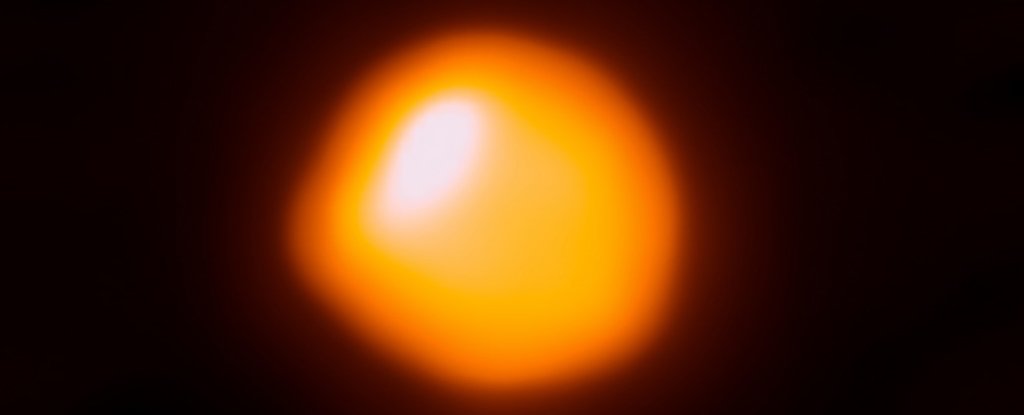Betelgeuse, the red giant star, has been exhibiting unusual behavior since the Great Dimming that occurred in 2019 and early 2020. The fluctuations in brightness that were a regular occurrence have changed, and the star has become uncharacteristically bright. Currently, Betelgeuse is at 142 percent of its normal brightness, with a steady upward trend for months and a peak of 156 percent in April. This has led to speculation that Betelgeuse is about to blow in a spectacular supernova. However, scientists believe that its current behavior is more likely to be a bit of ongoing wobbliness following the 2019 dimming, and the star will return to normal within a decade.
The Uncommon Star
Located around 700 light-years from Earth, Betelgeuse is one of the most interesting stars in the sky. It is a red giant star in the final stage of its life, and its current behavior is not typical for this type of star. Betelgeuse was once a blue-white O-type star, the most massive stellar weight class. Stars of this mass range burn through their hydrogen stores more rapidly than lighter-weight stars. Betelgeuse is only about 8 to 8.5 million years old, whereas the Sun, at 4.6 billion years old, is only about halfway through its hydrogen-burning lifetime.
Betelgeuse has since changed its spectral type, as it has almost run through its hydrogen reserves. It is now fusing helium into carbon and oxygen and has grown to about 764 times the size of the Sun and about 16.5 to 19 times its mass. Eventually, it will run out of fuel to burn, go supernova, throw off its outer material, and its core will collapse into a neutron star.
The Great Dimming Event
During the Great Dimming event, Betelgeuse decreased in brightness by almost 25 percent, and astronomers scrambled to figure out the cause. It turned out that cooling on Betelgeuse’s surface caused a massive cloud of dust to condense on the star. This cloud was subsequently ejected, partially obscuring Betelgeuse, causing it to appear to dim. This behavior is fairly normal for a red giant star, but scientists say we rarely get such a front-row seat.
Changes in Fluctuations
Before the Great Dimming, Betelgeuse had regular cycles of brightness fluctuations, with the longest of these cycles being around 5.9 years and another lasting 400 days. However, the Great Dimming appears to have caused changes in these fluctuations. In a new paper uploaded to preprint server arXiv, astrophysicist Morgan MacLeod of the Harvard-Smithsonian Center for Astrophysics found that the 400-day cycle seems to have halved. This pulsation cycle is driven by expansion and contraction inside the star. According to simulations conducted by MacLeod and his colleagues, a convective plume inside Betelgeuse could have welled up, becoming the material that breaks away from the star. During the process, this upwelling disrupted the phase of the 400-day cycle, producing a roughly 200-day cycle that the star is currently exhibiting.
Current Behavior
Betelgeuse is still reeling from the Great Dimming, meaning that its current brightening is also likely related to ongoing issues. As astrophysicist and Betelgeuse expert Andrea Dupree of the Harvard-Smithsonian Center for Astrophysics – a co-author on MacLeod’s team – told Scientific American, “Just imagine if you take a hunk of the material out. Then everything else is going to swish in, and it’s going to slosh around … I think what’s happening is that the top layers are having a problem coming back to normal.”
Betelgeuse, the red giant star, has been exhibiting unusual behavior since the Great Dimming that occurred in 2019 and early 2020. The fluctuations in brightness that were a regular occurrence have changed, and the star has become uncharacteristically bright. However, scientists believe that its current behavior is more likely to be a bit of ongoing wobbliness following the 2019 dimming, and the star will return to normal within a decade. Betelgeuse is a unique star, even for a red giant, with an interesting past and an uncertain future. Its behavior continues to surprise astronomers, keeping them on their toes and offering a front-row seat to the fascinating wonders of the universe.



Leave a Reply